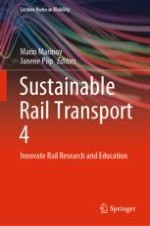2022 | OriginalPaper | Chapter
The Effects of Sustainability-Driven Policies on Transport CO2 Production: High-Speed Rail Transportation as an Alternative to Passenger Air Transport
Authors : Alessio Tardivo, Armando Carrillo Zanuy
Published in: Sustainable Rail Transport 4
Publisher: Springer International Publishing
Activate our intelligent search to find suitable subject content or patents.
Select sections of text to find matching patents with Artificial Intelligence. powered by
Select sections of text to find additional relevant content using AI-assisted search. powered by
